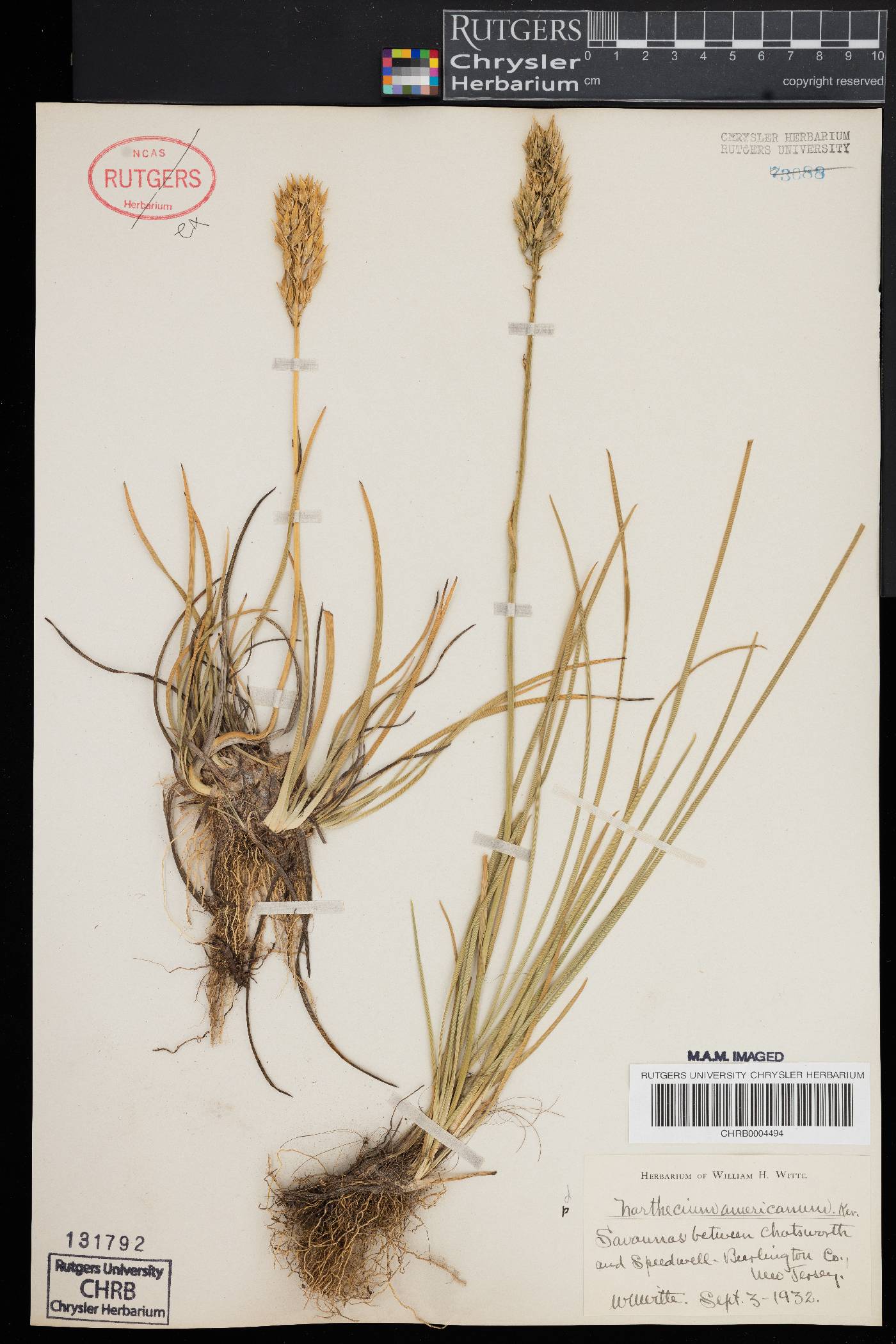Narthecium
|
Family: Nartheciaceae |
The widely disjunct species of Narthecium (1-5 in Europe, 1 in eastern Asia, and 2 in North America) are morphologically and ecologically quite similar (A. A. Stabursvik 1959; W. B. Zomlefer 1997). Narthecium has sometimes been included in the segregate family Melanthiaceae; based on morphology, anatomy, and karyology, it is best placed in its own family, Nartheciaceae (J. D. Ambrose 1975, 1980; P. Goldblatt 1995; W. B. Zomlefer 1997; A. L. Takhtajan 1997; M. N. Tamura 1998b), and order, Nartheciales (J. L. Reveal and W. B. Zomlefer 1998). The Nartheciales, considered basal to the Liliaceae in the broad sense and to the monocotyledons, includes only Nartheciaceae, with five genera: Aletris Linnaeus (14 species, eastern Asia and North America), Metanarthecium Maximowicz (1, eastern Asia), Lophiola Ker Gawler (2, eastern North America), and Nietneria Klotzsch ex Bentham (1, northern South America). In this flora, Lophiola is treated with the Haemodoraceae; see page 47. Flowers of the common European species Narthecium ossifragum (Linnaeus) Hudson, which are fragrant, homogamous, and produce no nectar, are known to be pollinated by raindrops. The conspicuous filament hairs, common within the genus, trap pollen, and self-pollination occurs when raindrops accumulate around the filament hairs, allowing pollen to float to the stigma (O. Hagerup 1950; M. C. F. Proctor and P. F. Yeo 1972; M. C. F. Proctor et al. 1996). Such pollination probably occurs also in the North American species. Steroidal saponins of Narthecium are thought to cause liver disease (icterus) in nonpigmented sheep via a deadly photosensitivity (A. A. Stabursvik 1959; R. Hegnauer 1962+, vol. 2, pp. 284-286).
Tep 6, linear-oblong, 3-nerved, withering and persistent around the fr; stamens 6, the filaments elongate, filiform, densely woolly, the anthers short, introrse, dorsifixed; ovary superior, gradually tapering into a poorly differentiated style; stigma minutely 3-lobed; ovules numerous; capsule elongate, loculicidal; seeds fusiform, prolonged at each end into a long filiform appendage; perennial herbs with stout rhizomes, with linear, basal, equitant lvs and an erect scape bearing a terminal raceme of yellow fls. 4, N. Hemisphere. Gleason, Henry A. & Cronquist, Arthur J. 1991. Manual of vascular plants of northeastern United States and adjacent Canada. lxxv + 910 pp. ©The New York Botanical Garden. All rights reserved. Used by permission. |

